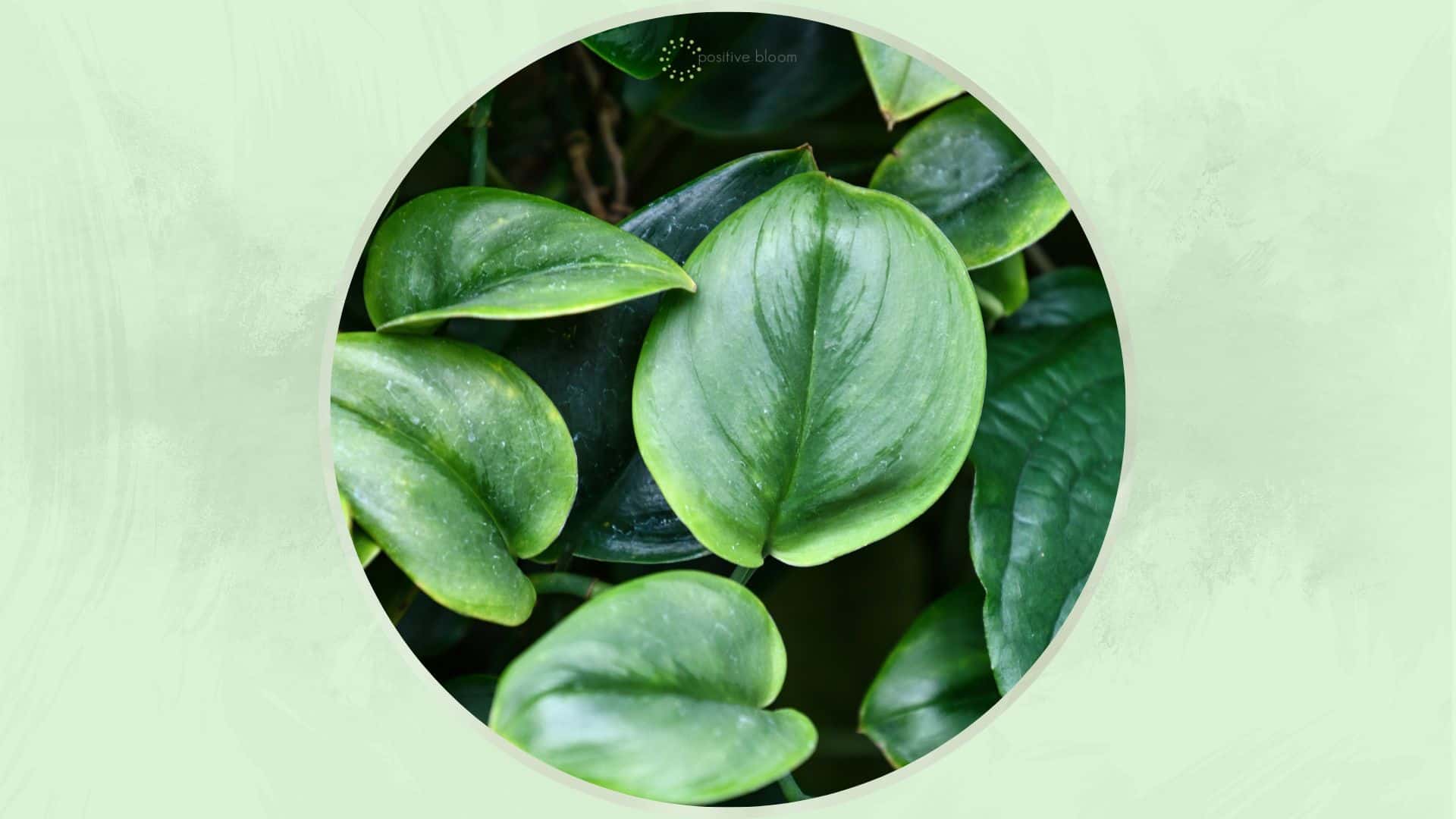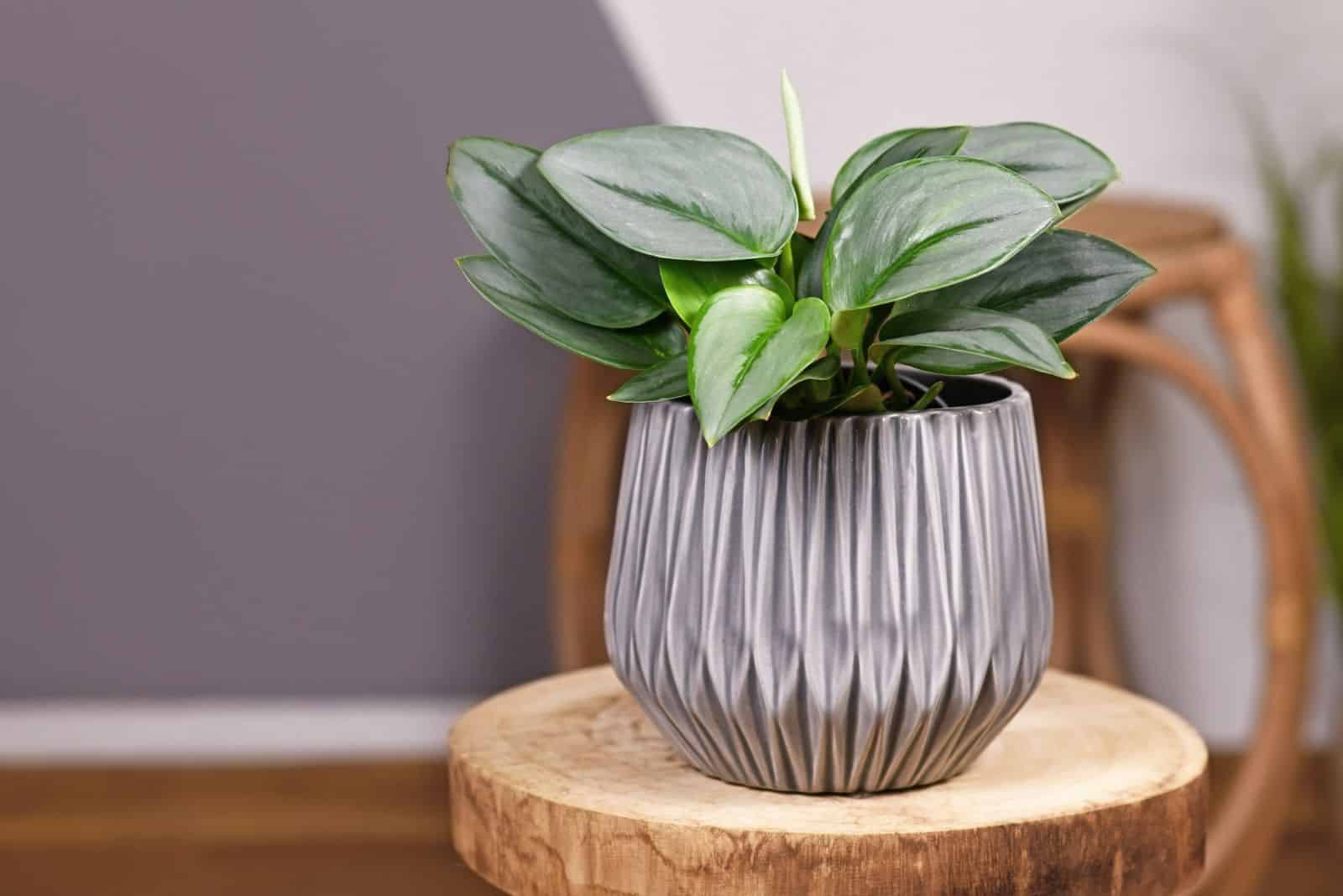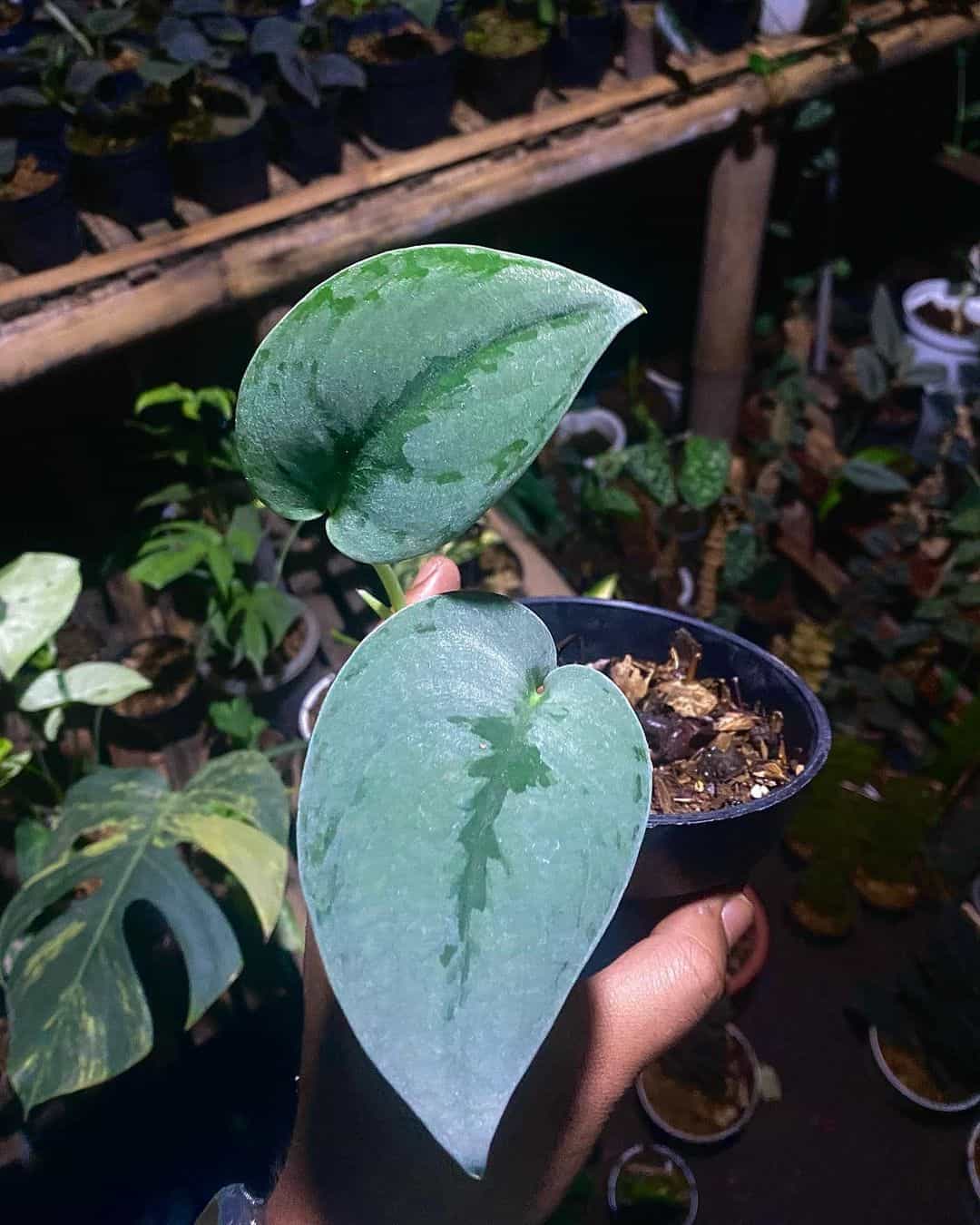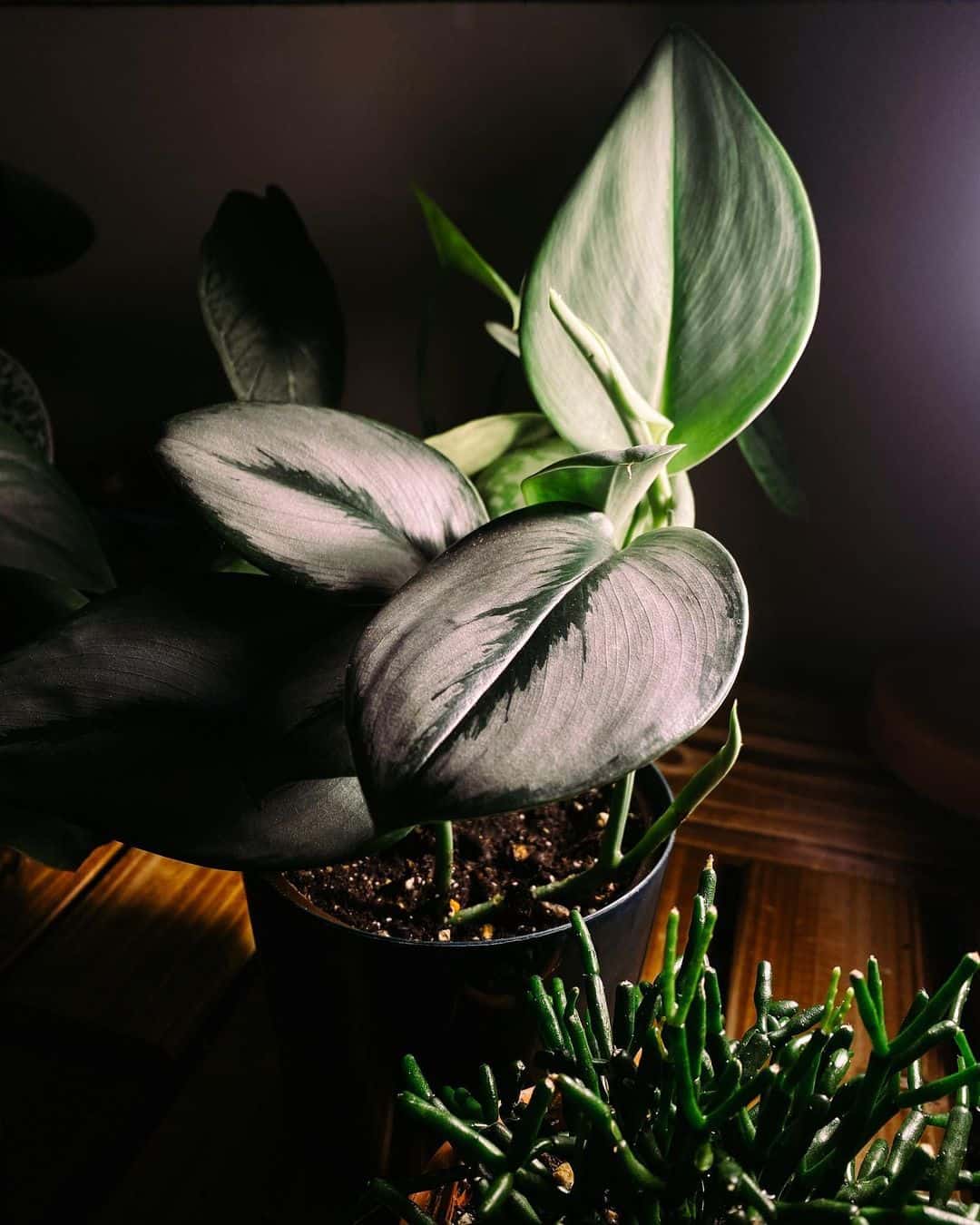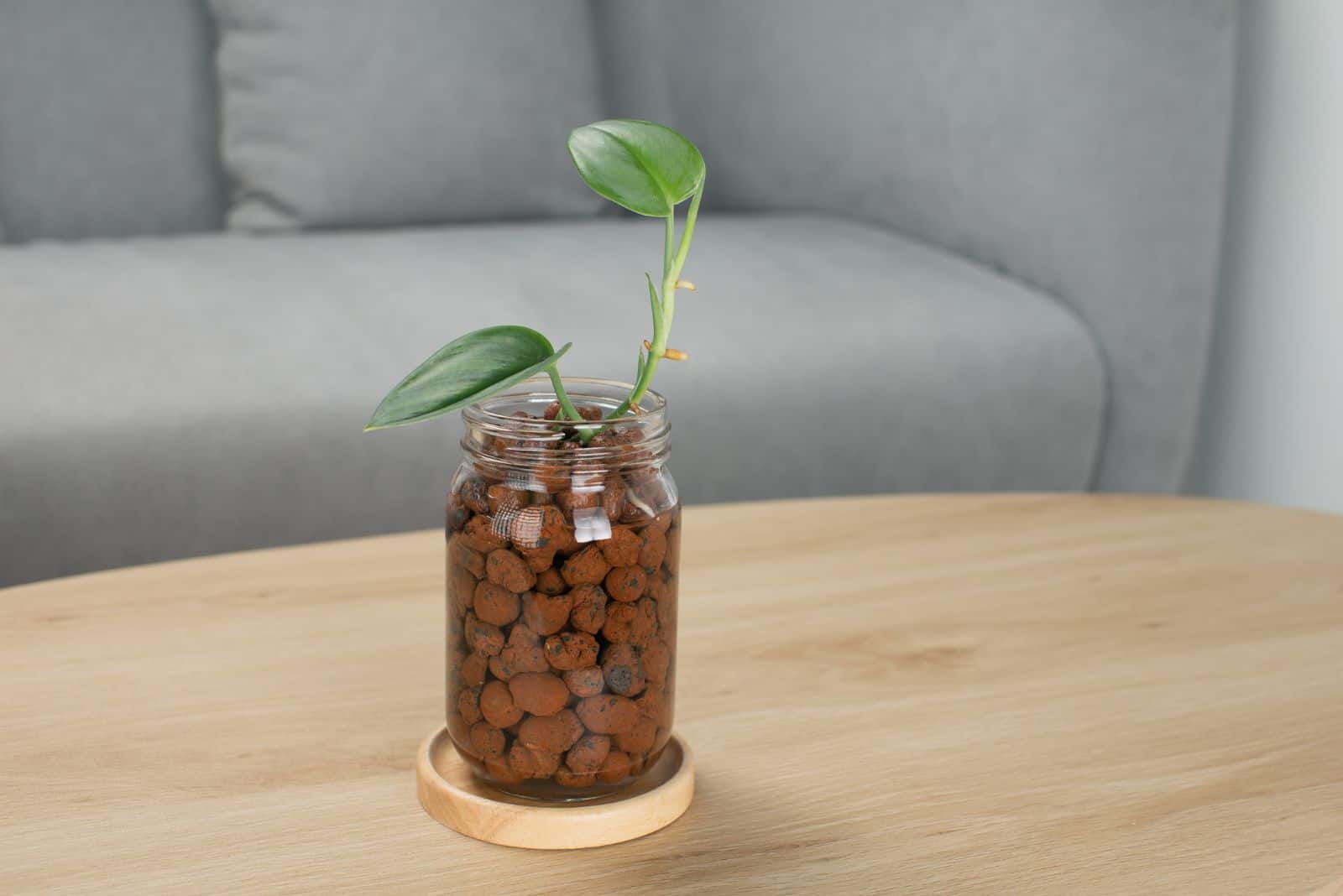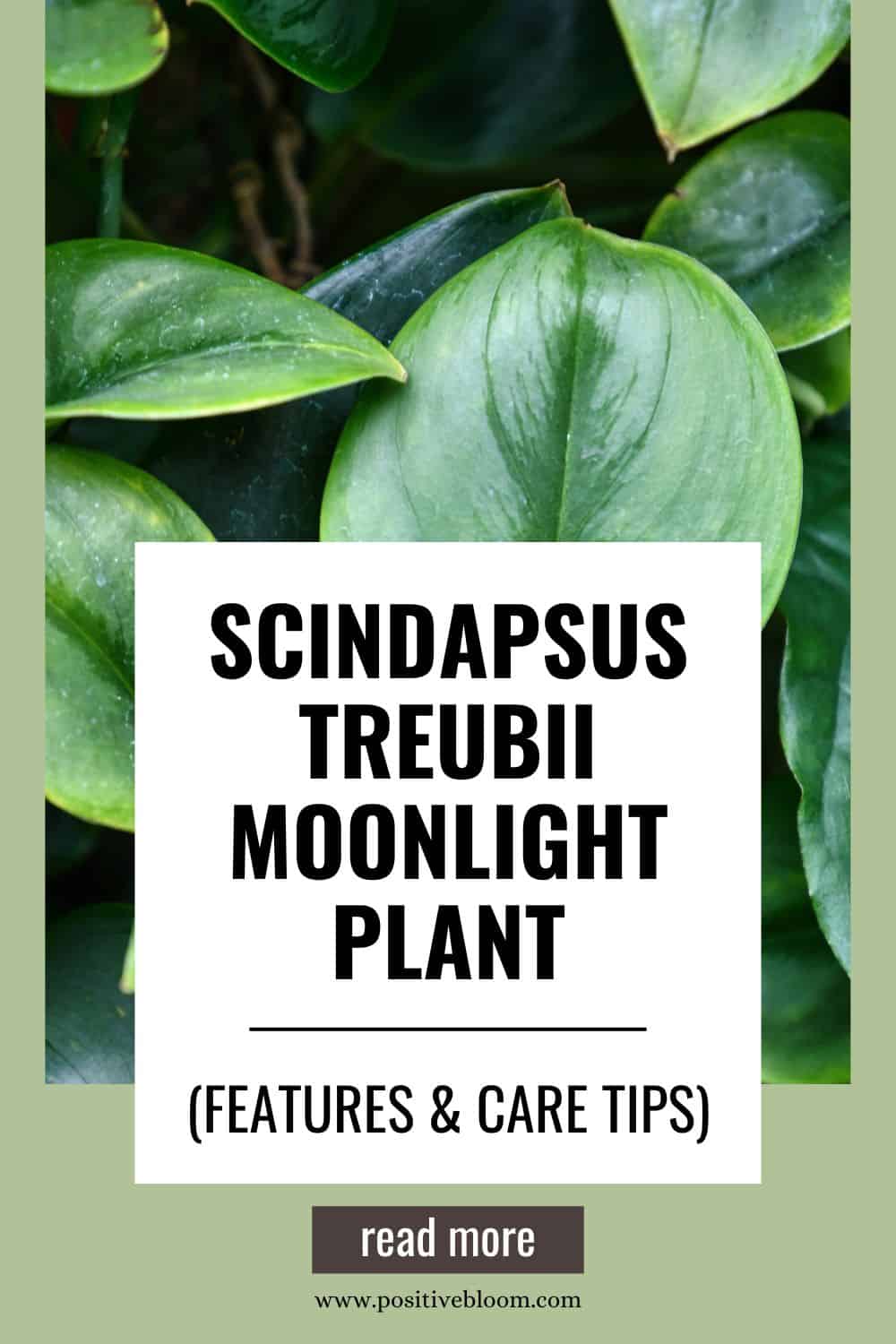If you are looking for a trailing tropical plant to grow in your room, you should definitely check out the beautiful Scindapsus Treubii Moonlight, commonly known as the Sterling Silver Scindapsus.
This plant produces dark green leaves with a silvery sheen that resembles moonlight, hence the name Scindapsus Treubii Moonlight. However, every moon has its own dark side, which is why there is also a Scindapsus Dark Form.
These plants are two varieties of Scindapsus Treubii, and today we are going to focus on the Moonlight plant.
Now, let’s talk more about the plant and how to care for it.
What Is The Scindapsus Treubii Moonlight?
The Scindapsus Treubii Moonlight is a lovely, beginner-friendly houseplant. It belongs to the Araceae family, within the genus Scindapsus. You have probably already heard about the famous Scindapsus Pictus, also called Satin pothos.
Even though they belong to the Scindapsus genus, the Satin pothos got its name because of its astonishing resemblance to pothos plants. If they belonged to the Epipremnum genus, they would be true pothos.
However, Scindapsus varieties are rare houseplants compared to pothos plants, especially if we look at Treubii plants. My Scindapsus surprised many of my friends, especially the ones that weren’t familiar with this genus!
They were amazed by its long vining stems and thick foliage, and also how easy its plant care is.
Let’s talk more about the Moonlight Scindapsus.
Plant Origin
This lovely plant originates from the deep rainforests of Southeast Asia, although they can also be spotted in Queensland and the Pacific Islands. They thrive in tropical jungles and rainforests, where they spread out along the ground until they find a strong tree to climb.
These little climbers use aerial roots to anchor themselves onto large trees. When climbing, their leaves will lengthen and darken.
Since it is a climber, this houseplant will need something to climb on — it can be a moss pole, a trellis, a bamboo stick, or any other moss pole alternative. They also look lovely in hanging baskets with their long vines and leaves swaying in the air.
Plant Features
This low-maintenance plant is a slow grower, so you won’t have to repot frequently, though you will probably have to prune it.
Its dark green foliage with a silvery shimmer looks quite unique. It’s not common to see silvery leaves on a houseplant. Their relative, the Scindapsus Dark Form, has almost black leaves!
They look so good next to each other — it is kind of like looking at both sides of the moon.
These plants can even produce flowers, though it rarely happens because the growing conditions have to be perfect. Be that as it may, the plant looks great even without flowers.
The Scindapsus Treubii Moonlight thrives in USDA hardiness zones 9 through 11, though I would suggest keeping them indoors as it is easier to control the growing conditions.
Since they are mildly toxic, you should keep them out of reach if you have kids and pets running around the house.
Scindapsus Treubii Moonlight Care Guide
Scindapsus plants are generally easy to take care of. These aroids have similar requirements as any other tropical plant, such as Monstera, Alocasia or Philodendron, so you can grow them together.
There is still some stuff that you have to be careful of — for instance, you should be extremely careful when watering them because overwatering is their main issue.
Soil Requirements
Follow the care tips down below so your plant can avoid any major issues.
Choosing the proper soil for your plants is crucial. Imagine purchasing a plant and paying for delivery, only to have it wilt in a few months due to a dense growing media.
Moonlight plants thrive in a well-draining soil mix that is also rich in nutrients. You can either use a store-bought aroid or succulent potting mix, though I would suggest making one on your own. This way, you can add materials that will ensure good drainage.
For instance, you can add coco coir, perlite, orchid bark, peat moss, and compost to make the soil rich in nutrients.
You should also cultivate your Moonlight in a pot with drainage holes in the bottom, which will make sure that the excess water drains away so your plant never sits in soggy soil.
Light Requirements
Since they originate from deep Asian rainforests, they are used to growing under big trees that block out direct sunlight. This is what you have to do with your own plant as well. Mimicking a plant’s natural habitat is the best form of plant care!
The Scindapsus Treubii Moonlight thrives in bright indirect sunlight, which is why keeping them near an east-facing window is ideal. However, you can also put a sheer curtain up to protect them from full sun exposure.
The moon shines the brightest in the dark; however, your Moonlight plant probably won’t. Even though it can tolerate low light settings, those lovely variegations will slowly fade away and you will end up with completely green leaves.
A similar thing goes for full sun exposure, although the leaves will probably also turn brown and crispy.
Therefore, keeping them in indirect light is a good way to go!
You can also invest in a good set of grow lights if you can’t find the perfect spot for your Scindapsus plant.
Water Requirements
The Moonlight plant likes to have its soil moist instead of soggy. This is why overwatering is one of the main issues. Luckily, there are a few tips and tricks that you can use to water your plant properly.
Water requirements depend on many different factors, such as temperature and humidity levels. This is why it is hard to determine an exact watering schedule.
I would recommend that you always check the soil before watering. Wait until the top few inches of the soil dry out before watering again. This way, you will keep the soil moist, which is exactly what the plant wants!
Leaves curling up is a way for a plant to tell you that it is thirsty — if you notice this, immediately water your plant.
Not letting the plant sit in bone-dry soil for an extended period of time is just as important as not keeping it in soggy soil. Underwatering leads to curly leaves and stunted growth.
Temperature Requirements
Moonlight plants prefer warm temperatures. They thrive in temperatures ranging from 65 to 75 degrees. Many tropical plants don’t tolerate sudden temperature changes or lower than preferred temperatures; however, the Scindapsus plant doesn’t mind.
They cannot withstand freezing temperatures, but you can keep them near a window during the winter months.
Keeping them near heat sources like fireplaces or radiators should also be avoided, as this can dry out your plant more quickly.
Humidity Requirements
These tropical plants like high humidity!
They prefer growing in humidity levels of around 60%, though they can grow just fine in humidity levels of 40%. Moderate humidity conditions are good, but higher humidity gives this plant that special glow!
There are a few ways to improve humidity indoors. The easiest way is to buy a humidifier, but you can also consider misting your plant on a daily basis if you don’t want to spend money on humidifiers.
Another way to prevent your plant from drying out is by putting it in a room with higher humidity, like a kitchen or bathroom, or you can try and create a pebble tray.
Fertilizer Requirements
There are techniques that boost the soil’s nutrient content and provide your plant with nourishment. Scindapsus plants prefer nutrient-rich and well-draining soil, as we’ve already covered.
High-quality fertilizers will provide your plant with all the essential nutrients it needs, and they will also encourage the growth and production of new leaves. Soon, your space will be aglow with shimmery silver leaves!
These plants require fertilizer once a month during the growing season. Use a nitrogen-rich fertilizer to promote the development of lush foliage.
Choosing between a balanced granular fertilizer and a slow-release fertilizer is totally up to you.
If you want to improve the nutritional value of the soil without using fertilizer, you can also add organic compost. Avoid applying fertilizers during the winter months as that’s when these plants enter dormancy.
Repotting
You won’t need to worry about this because these lovely plants only need to be replanted every few years.
You’ll know it’s time to repot your Moonlight plant when you see those small roots sprouting out of the drainage holes!
Always use new soil when repotting plants, and get a pot that is 2 inches bigger than the previous one. Overwatering is more likely to happen if you place plants in a pot that is too big, so choose carefully to help avoid root rot.
Additionally, because they require proper drainage, it’s crucial that the bottom of your new pot has drainage holes. Remember, frequent repotting can do more harm than good.
Pruning
Pruning is not necessary when it comes to plant care for the Treubii Moonlight. You should trim off any dead or damaged stems or leaves to keep your plant looking nice and tidy.
You can pinch back the new growth to encourage it to branch and grow more fully, and you can also use these cuttings for propagation.
Propagation
Propagating the Scindapsus Treubii Moonlight is relatively easy. All you have to do is find a healthy stem with nodes and then put it in either water or soil. If you want to propagate the Scindapsus plant, follow the instructions below.
Stem Cutting In Water
Prepare a healthy Scindapsus plant along with sterile shears and a new container.
These are the steps for water propagation:
1. Locate a cutting with at least one node already attached to it. Cut it with sterile shears.
2. Put the cutting in a jar or vase filled with lukewarm, filtered water. At least one node should be submerged, so pay attention to them.
3. Place the cutting in bright indirect light.
4. Replace the water in the jar every two to three days to prevent the cutting from going bad.
5. Usually, it takes a few weeks for new roots to develop. Once they are developed, you can put the plant in the soil.
Stem Cutting In Soil
If you want to put the stem cuttings directly in the soil, prepare fresh potting soil, a sterilized pair of pruners, and a rooting hormone. Here are the instructions:
1. Use the same technique for water propagation to cut the plants into cuttings.
2. Fill the container with potting soil. It is best to blend peat moss, perlite, orchid bark, and worm castings.
3. Dig a hole in the middle of the soil that is large enough to fit the cutting.
4. Place the cutting in the hole and add more soil if required.
5. Place the container in a warm place with bright indirect light. You can cover it with a plastic bag to increase humidity.
6. Ensure that all the conditions are right, and after a few weeks the roots will begin to show.
Common Issues
The Scindapsus Treubii Moonlight is a relatively hardy plant. However, it is still susceptible to some issues like pest infestation, disease, or inadequate plant care.
Keep reading to find out more about the common issues that affect the Scindapsus Treubii Moonlight, as well as how to fix them.
Pest Infestation
Mealybugs, aphids, and spider mites are common pests that affect the lovely Moonlight plant.
Aphids are sap-sucking insects that often live on the undersides of leaves, however, you can sometimes find them on stems. You will know you have aphids if you notice honeydew on your plant.
Spider mites cause tiny brown or white spots to appear on the leaves. They also enjoy living on the undersides of the leaves, where they leave little webs of webbing all over the plant.
Mealybugs are white and small, making it easy to spot them on the leaves. They actually resemble little cotton balls.
Mealybugs can be quickly eliminated by using dish soap or rubbing alcohol. Spray an alcohol and dish soap mixture on the mealy bugs to kill them.
Aphids can also be removed naturally using things like neem oil or horticultural oils. Spider mites can be eliminated with a rubbing alcohol and water mixture. After soaking a towel in the mixture, brush it onto the leaves.
Plant Diseases
We already mentioned that this plant is susceptible to root rot. To get rid of root rot, you will have to repot the plant and trim off any damaged roots. Use fresh soil and apply a fungicide.
Leaves turning yellow and smelly soil are usual signs of root rot infection.
If you notice any brown or creamy and woody growth near the soil, then your plant is probably suffering from crown gall. You should immediately isolate the plant to prevent the spread to nearby plants.
Leaf Discoloration
This aroid will suffer yellowing leaves as a result of root rot.
Brown leaves are caused by underwatering, overwatering, and too much light.
Your plant will exhibit dry leaf edges that eventually turn brown if it doesn’t get enough water.
Check all environmental factors, such as light, humidity, temperature, and soil moisture content, if you see leaf yellowing.
To Sum Up
The Scindapsus Treubii Moonlight plant is truly one-of-a-kind. With their silvery shimmers on the leaves, they can really spruce up your room and make it look edgier. You can even get the Dark Form plant so you have one of each!
It is also a pleasant surprise that these lovely plants are relatively easy to care for. You can grow them together with other tropical plants since they have similar needs.
You probably won’t have any luck finding this plant in your local nursery, so I would recommend checking Etsy or Amazon. Good luck finding it, and make sure to propagate more if you do!
I hope this article was helpful.
Until next time!
Like this post? Share or pin it for later!

